Other Things Solomon Did
1Solomon built the Lord’s temple and his own palace. It took him 20 years to build them. After that, 2Solomon rebuilt the villages Hiram had given him. Solomon had Israelites make their homes in them. 3Then Solomon went to Hamath Zobah. He captured it. 4He also built up Tadmor in the desert. He built up all the cities in Hamath where he could store things. 5He rebuilt Upper Beth Horon and Lower Beth Horon. He put up high walls around them. He made their city gates secure with heavy metal bars. 6He rebuilt Baalath and all the cities where he could store things. He also rebuilt all the cities for his chariots and horses. Solomon built anything he wanted in Jerusalem, Lebanon and all the territory he ruled.
7There were still many people left in the land who weren’t Israelites. They included Hittites, Amorites, Perizzites, Hivites and Jebusites. 8They were children of the people who had lived in the land before the Israelites came. The people of Israel hadn’t destroyed them. Solomon forced them to work very hard as his slaves. And they still work for Israel to this day. 9But Solomon didn’t force the Israelites to work as his slaves. Instead, some were his fighting men. Others were commanders of his captains, chariots and chariot drivers. 10Still others were King Solomon’s chief officials. There were 250 officials in charge of the other men.
11Solomon brought Pharaoh’s daughter up from the City of David to the palace he had built for her. Solomon said, “My wife must not live in the palace of David, who was the king of Israel. It’s one of the places the ark of the Lord has entered. That makes it holy.”
12Solomon had built the Lord’s altar. It stood in front of the temple porch. On that altar Solomon sacrificed burnt offerings to the Lord. 13Each day he sacrificed what the Law of Moses required. He sacrificed the required offerings every Sabbath day. He also sacrificed them at each New Moon feast and during the three yearly feasts. Those three were the Feast of Unleavened Bread, the Feast of Weeks and the Feast of Booths. 14Solomon followed the orders his father David had given him. He appointed the groups of priests for their duties. He appointed the Levites to lead the people in praising the Lord. They also helped the priests do their required tasks each day. Solomon appointed the groups of men who guarded all the gates. That’s what David, the man of God, had ordered. 15The king’s commands were followed completely. They applied to the priests and Levites. They also applied to the temple treasure.
16All of Solomon’s work was carried out. It started the day the foundation of the Lord’s temple was laid. It ended when the Lord’s temple was finished.
17Solomon went to Ezion Geber and Elath on the coast of Edom. 18Hiram sent him ships that his own officers commanded. They were sailors who knew the sea. Together with Solomon’s men they sailed to Ophir. They brought back 17 tons of gold. They gave it to King Solomon.
Salomos Amtsführung
(1. Könige 9,15‒24)
1Zwanzig Jahre dauerte es, bis der Tempel des Herrn und der Königspalast fertig waren. 2Danach ließ Salomo die Städte ausbauen, die Hiram ihm gegeben hatte, und siedelte Israeliten darin an.
3Er unternahm einen Feldzug gegen die Stadt Hamat-Zoba und eroberte sie. 4Außerdem baute er große Lagerhallen in der Gegend von Hamat; er erweiterte die Wüstenstadt Tadmor, 5-6das obere und das untere Bet-Horon und Baalat zu befestigten Städten mit hohen Mauern und verriegelbaren Toren. Er ließ Städte bauen, in denen Vorratshallen, Hallen für die Streitwagen und Pferdeställe untergebracht wurden.
Alles, was Salomo bauen wollte, sei es in Jerusalem, im Libanon oder sonst irgendwo in seinem Reich, ließ er durch Fronarbeiter errichten. 7-8Sie waren keine Israeliten, sondern die Nachkommen der Hetiter, Amoriter, Perisiter, Hiwiter und Jebusiter, die früher das Land Israel bewohnt hatten. Bei der Eroberung des Landes hatten die Israeliten diese Völker nicht völlig vernichtet. Bis heute müssen ihre Nachkommen für Israel Fronarbeit leisten. 9Die Israeliten selbst aber blieben davon verschont. Sie dienten Salomo als Soldaten, Offiziere und Befehlshaber über die Streitwagen und Reitertruppen. 10Salomo setzte in ganz Israel 250 Männer als Oberaufseher über die Fronarbeiter ein, die ihrerseits den Bezirksverwaltern unterstanden.
11Salomo hatte eine Tochter des Pharaos geheiratet. Er ließ einen Palast für sie bauen, weil er nicht wollte, dass sie in der »Stadt Davids« wohnte. Denn er sagte sich: »Meine Frau soll nicht in dem Palast wohnen, der David, dem König von Israel, gehört hat. Diese Räume sind heilig, weil die Bundeslade des Herrn in ihrer Nähe stand.«
Ordnung des Tempeldienstes
(1. Könige 9,25‒28)
12Nachdem Salomo den Bau des Tempels vollendet hatte, ließ er auf dem Altar des Herrn vor der Vorhalle täglich Opfer darbringen, 13so wie es im Gesetz von Mose befohlen war. Man opferte auch am Sabbat, bei Neumond und an den drei großen Festen des Jahres: am Fest der ungesäuerten Brote, am Wochenfest und am Laubhüttenfest. 14Salomo berief die Dienstgruppen der Priester ein. Sie sollten ihre Arbeit im Tempel versehen, wie David es vorgeschrieben hatte. Auch die Leviten begannen ihren Dienst: Die eine Gruppe sollte Gott mit ihren Liedern loben, eine andere den Priestern bei ihrer Arbeit helfen, so wie es für jeden Tag angeordnet war. Auch die Tore wurden von den Leviten bewacht, jedes Tor von einer Gruppe. So hatte es David, der Diener Gottes, gewollt. 15Salomo befolgte die Anweisungen genau, die David für die Priester, die Leviten und die Aufbewahrung des Tempelschatzes gegeben hatte.
16Damit waren alle Pläne Salomos ausgeführt, von der Grundsteinlegung des Tempels bis zu seiner Vollendung.
17Salomo reiste nach Ezjon-Geber, einem Ort in der Nähe von Elat am Roten Meer, im Gebiet der Edomiter. 18Dorthin schickte König Hiram ihm Schiffe und erfahrene Seeleute, die zusammen mit Salomos Männern nach Ofir segelten, um von dort Gold zu holen. Sie brachten Salomo über 15 Tonnen Gold mit.




